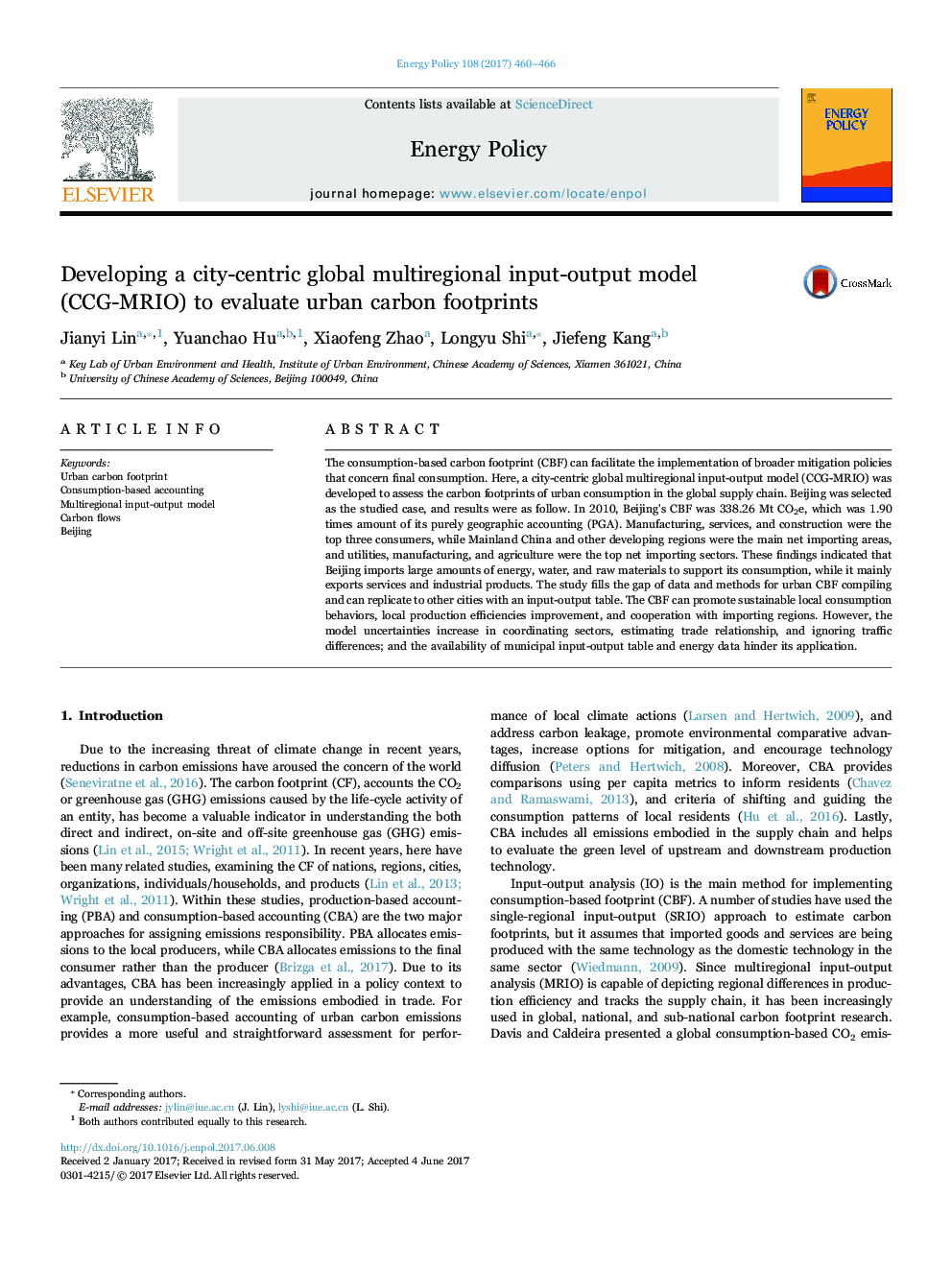| Article ID | Journal | Published Year | Pages | File Type |
|---|---|---|---|---|
| 5105648 | Energy Policy | 2017 | 7 Pages |
Abstract
The consumption-based carbon footprint (CBF) can facilitate the implementation of broader mitigation policies that concern final consumption. Here, a city-centric global multiregional input-output model (CCG-MRIO) was developed to assess the carbon footprints of urban consumption in the global supply chain. Beijing was selected as the studied case, and results were as follow. In 2010, Beijing's CBF was 338.26 Mt CO2e, which was 1.90 times amount of its purely geographic accounting (PGA). Manufacturing, services, and construction were the top three consumers, while Mainland China and other developing regions were the main net importing areas, and utilities, manufacturing, and agriculture were the top net importing sectors. These findings indicated that Beijing imports large amounts of energy, water, and raw materials to support its consumption, while it mainly exports services and industrial products. The study fills the gap of data and methods for urban CBF compiling and can replicate to other cities with an input-output table. The CBF can promote sustainable local consumption behaviors, local production efficiencies improvement, and cooperation with importing regions. However, the model uncertainties increase in coordinating sectors, estimating trade relationship, and ignoring traffic differences; and the availability of municipal input-output table and energy data hinder its application.
Related Topics
Physical Sciences and Engineering
Energy
Energy Engineering and Power Technology
Authors
Jianyi Lin, Yuanchao Hu, Xiaofeng Zhao, Longyu Shi, Jiefeng Kang,
